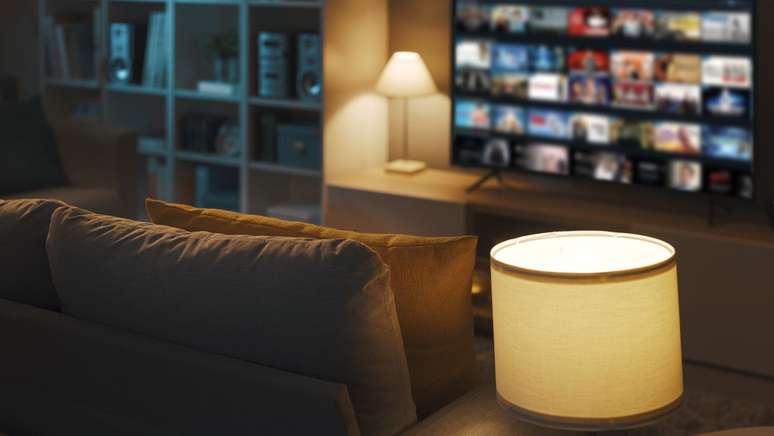Find out why the Wi-Fi 7 wireless networking standard can improve users’ video streaming experience by enabling transmissions of up to 8K
The new Wi-Fi 7 wireless networking standard (IEEE 802.11be) brings a series of innovations that can make a real difference to the quality of home networks. One of the potential improvements is the ability to do this consume streaming in very high resolution, without depending on the connection of TV and computer via cables, thanks above all to 4K-QAM and Multi-Link operation.
The covid-19 pandemic has accelerated the change in numerous consumption habits, contributing intensely to dissemination of streaming platforms. Even with fiber optic plans it is still common to not be able to take advantage of the image quality offered by the services.
There are several reasons why this happens and to some extent this may actually be the fault of the internet service providers. They can possibly shape data traffic to limit the bandwidth consumed by some addresses. However, in the vast majority of cases this is the result of a poorly optimized and poorly sized home network.
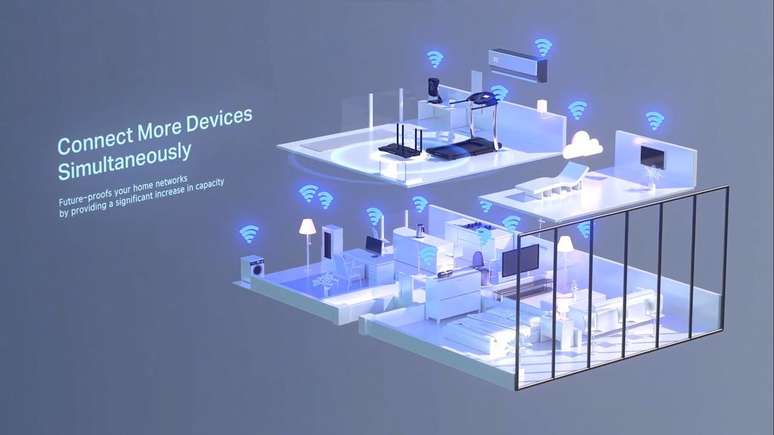
Wi-Fi 7 improves the streaming experience
It’s important to remember that many networking technologies, both wired and wireless, must be compatible on both ends for optimal performance. This means that at least some of the innovations of the new standard will not work wonders on older devices.
On the other hand, some innovations can still significantly optimize some general aspects of home networks as a whole. In itself this would justify the initial investment, even before purchasing devices with native Wi-Fi 7 support.
MU-MIMO 16×16
The Wi-Fi 5 standard introduced the technology MU-MIMO (Multiuser: Multiple Inputs, Multiple Outputs). It originally allows up to four users connected to the network to send and receive information at the same time, without the router having to interrupt the flow of any of them.
Just like in wired networks, where the number of devices depends on the available ports on routers or switches, wireless networks also have connection limitations. Theoretically, Wi-Fi networks support up to 253 clients since this is the limit of available IP addresses.
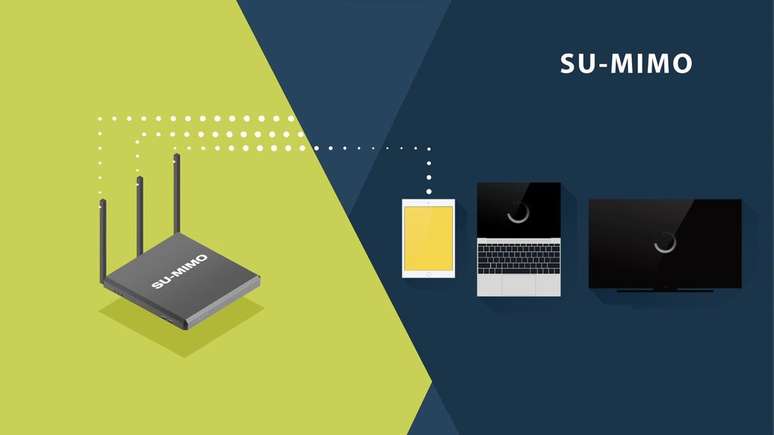
While they can assign addresses to all of these devices, older routers up to Wi-Fi 4 can only transmit data to one at a time. In other words, if in a family of three, one watches series in streaming, while the others play on the laptop and browse social networks, these routers alternate sending data to each device.
Therefore, even with a 500 MB internet plan, the transfer is interrupted every time a new customer requests information. Even if this process does not reduce the theoretical speed contracted, the continuous interruptions increase the time between the request for information and the sending by the router: the so-called lag or latency.
after WiFi6 Doubling the number of simultaneous connections to 8, Wi-Fi 7 brings 16×16 MU-MIMO, which doubles this again. In this way, routers compatible with the new Wi-Fi 7 standard allow up to 16 users to use the network, without increasing latency for any of them.
The advantage of MU-MIMO for players it is obvious, since it reduces lag in games, but this is also an advantage for the use of streams. The basic principle of this type of content is that the video data watched is downloaded sequentially as the film or series is broadcast.
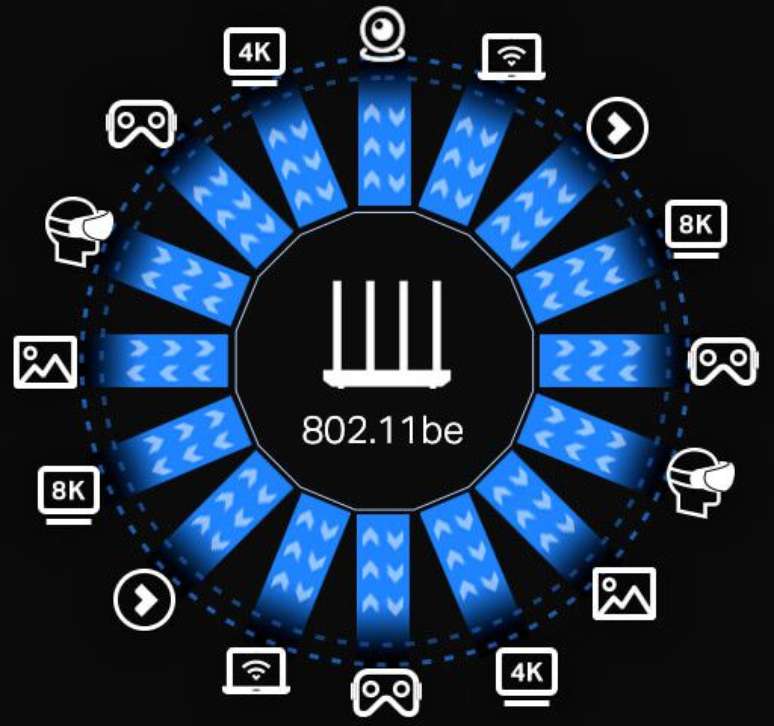
To do this, the platform constantly sends requests to the server, requesting subsequent packets to be sent. The size of these packets varies based on the cache available in the application and also based on the quality of the images.
If in a network without MU-MIMO technology one of these requests takes a long time to be sent because the router is busy with another transmission, the download of packets also takes a long time to start causing crashes.
Multi-link operation
Still thinking about establishing more stable connections, Wi-Fi 7 implements Multi-Link Operation (MLO) technology. It allows each device to connect to more than one operating frequency and consequently to more than one transmission channel at the same time.
One of the major advantages of Wi-Fi 6 compared to previous versions was, in addition to the presence of two operating bands, 2.4 GHz and 5 GHz, the possibility of automatically defining which one each client would connect to. This automatic selection feature remains in Wi-Fi 7, which still has a third frequency of 6 GHz.
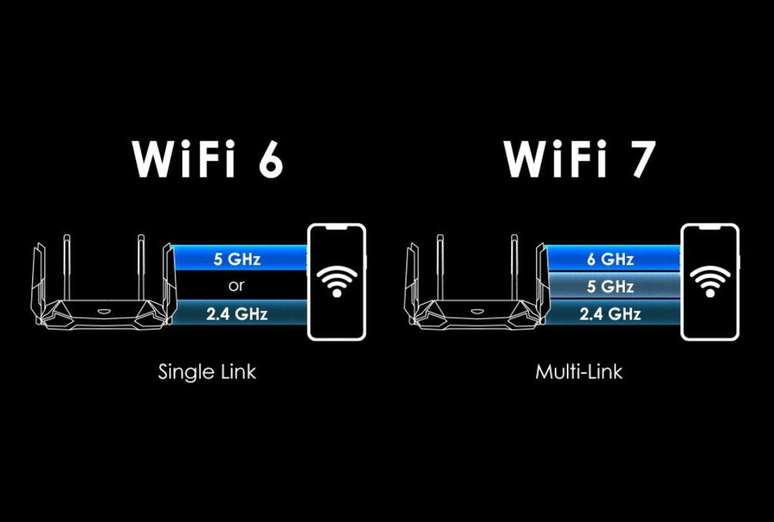
However, the main advantage in this regard is that devices certified for Wi-Fi 7 will be able to use all these frequencies at the same time. Each of them has limitations and advantages, and MLO allows you to compensate for the weaknesses of one band by connecting to the other two.
Until Wi-Fi 6, when the signal sent to smartphones or smart TVs on the network weakened, the router itself disconnected the client from that channel – or frequency – and reconnected it to another. Even though this management is fast and automatic, it still generates a small amount of data loss during the process, causing rapid connection interruptions.
The immediate benefit of Wi-Fi 7 is that combining MLO with 16×16 MU-MIMO makes it virtually impossible for a device to drop the connection, whether due to packet requests from other clients on the network or signal loss.
Currently, residential and commercial areas tend to have a large number of independent networks. This scenario makes interference between these networks quite common and the new Wi-Fi 7 technologies also minimize this problem through the same principle. Whenever one of the channels or frequencies loses quality due to interference, the device will be transferred to a less congested channel.
4K-QAM
Finally, another technology exclusive to Wi-Fi 7 routers is 4K-QAM, or 4K quadrature amplitude modulation. Because wireless networks use radio waves, digital data signals must be converted to analog signals for transmission.
QAM technology is the process of transforming digital signals into analog and vice versa on both ends of a wireless connection. For the home user, this ends up being the biggest bottleneck for streaming content consumption.
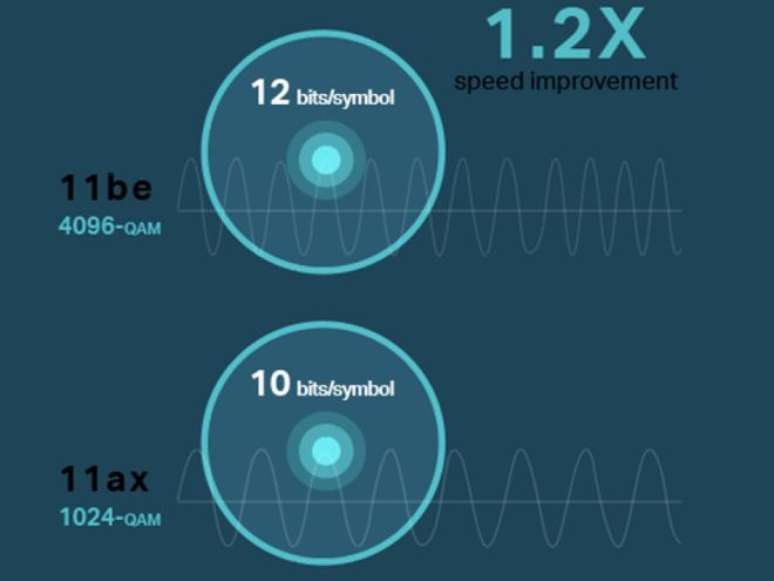
Even if your smart TV or notebook is very close to the router, the simple process of turning digital signals into analog, and then decoding them, generates latency. Therefore, whenever possible, users prefer to connect their televisions to the cable network, since in cable transmission the digital signal is sent without the need for modulation.
The data limit per symbol – or encoded packet – is 10 bits in Wi-Fi 6 versus 12 bits in Wi-Fi 7, making it possible to send 20% more data in the same transmitted symbol. Therefore, even with the latency generated by modulation in wireless networks, Wi-Fi 7 can compensate for this extra time by transmitting larger packets with less compression.
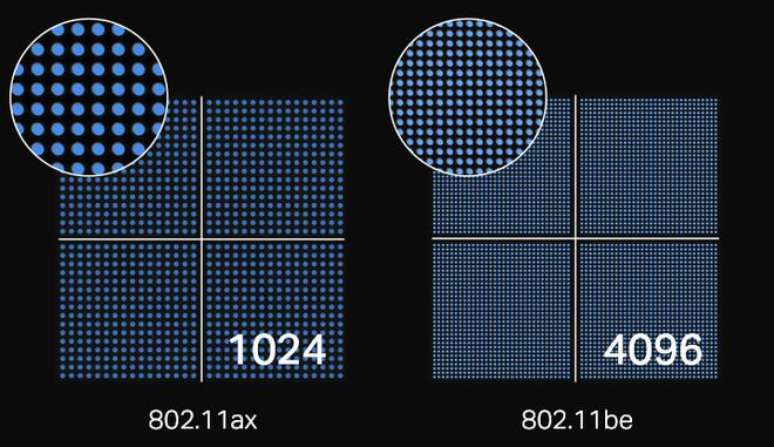
For optimal operation, 4K-QAM and MLO technologies must be present on both ends of the wireless network. For this reason, simply installing a router with the new standard will not guarantee that all network users can consume 8K streaming without choking.
MU-MIMO 16×16 instead acts exclusively on the internal management of the router. Furthermore, a parallel benefit of MLO is that the channel and frequency switching system in Wi-Fi 7 routers has become faster and more efficient, making this process almost imperceptible.
A router that can transmit data to up to 16 devices simultaneously and with efficient connection management ensures a better network size for the world where all devices depend on the Internet. At the very least, it guarantees that asking your digital assistant to turn off the light in your room won’t stop your League rankings or freeze your favorite series.
🛒Buy routers with MU-MIMO support at the best price!
🛒Buy 8K Smart TV at the best price!
Trends on Canaltech:
- Mrs. Teia | Who is the villain of the film and what does it tell us about the story
- Sound of Freedom | Why has a Christian film become the subject of controversy?
- The Crown review | The start of season six is exciting, but brings with it a distorted outlook
- The 50 funniest Google Assistant jokes
- Discover Ayrton Senna’s incredible car collection
- The sky is not the limit! | Sun in 2024, bag lost in space, Mars e+
Source: Terra
Rose James is a Gossipify movie and series reviewer known for her in-depth analysis and unique perspective on the latest releases. With a background in film studies, she provides engaging and informative reviews, and keeps readers up to date with industry trends and emerging talents.

